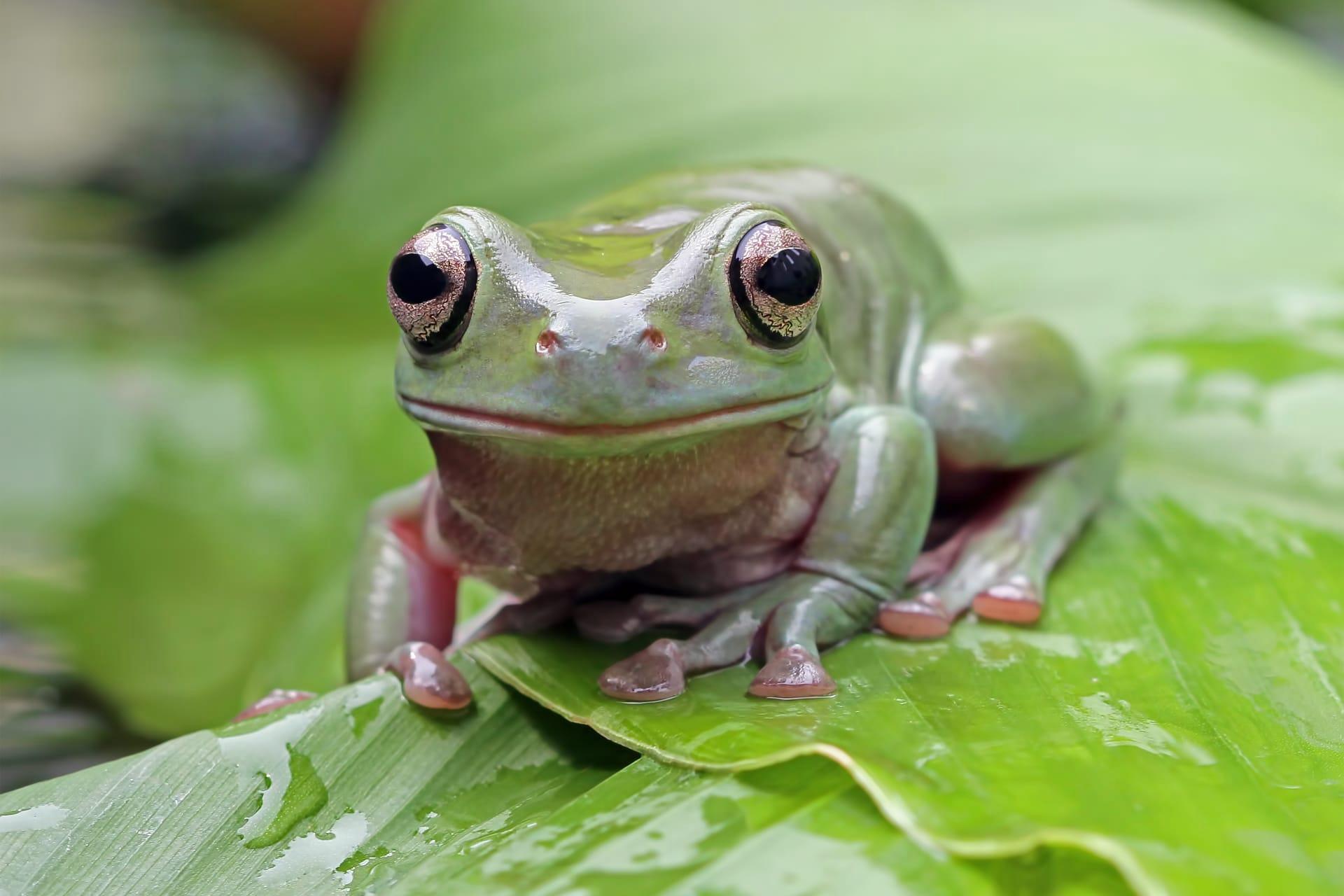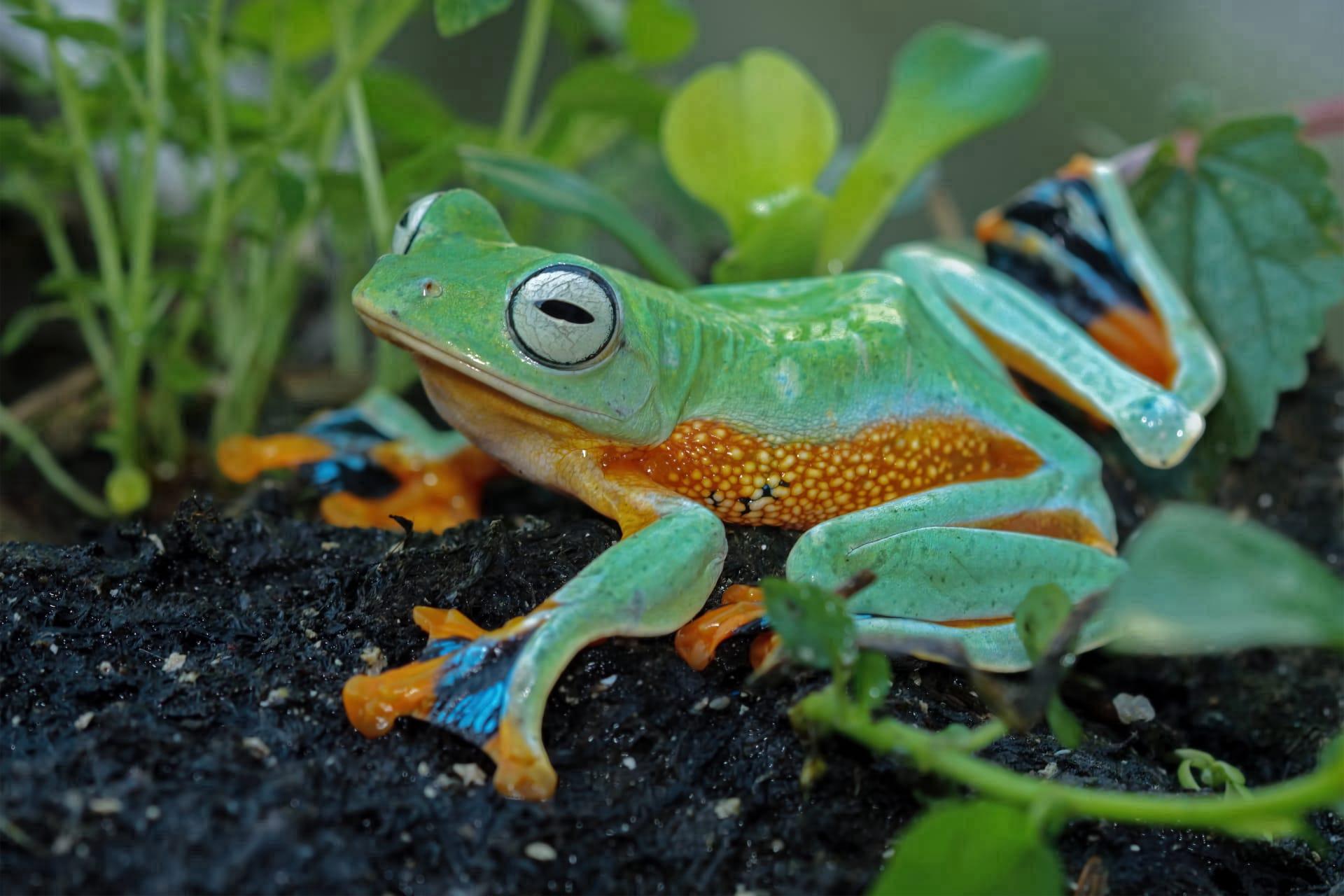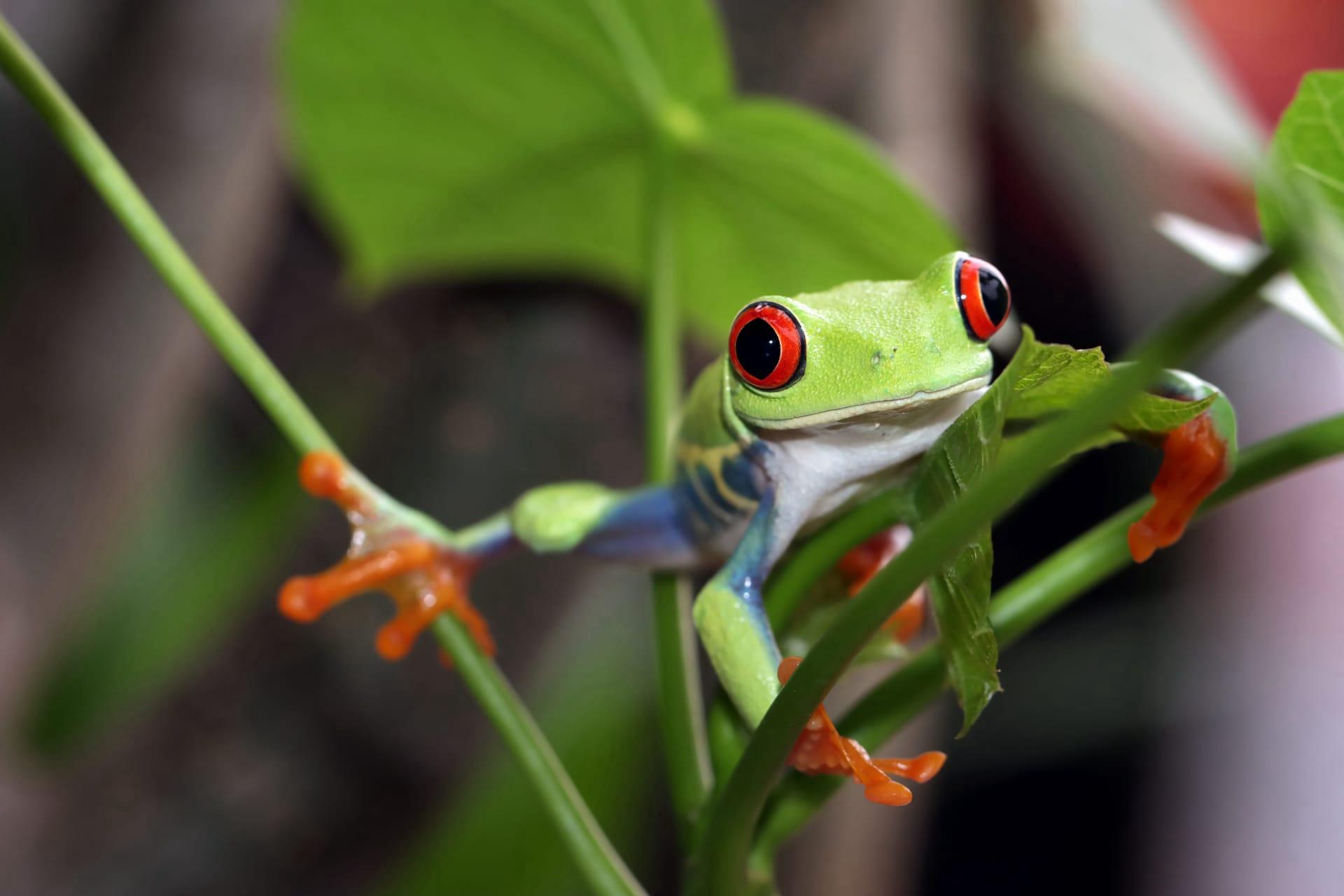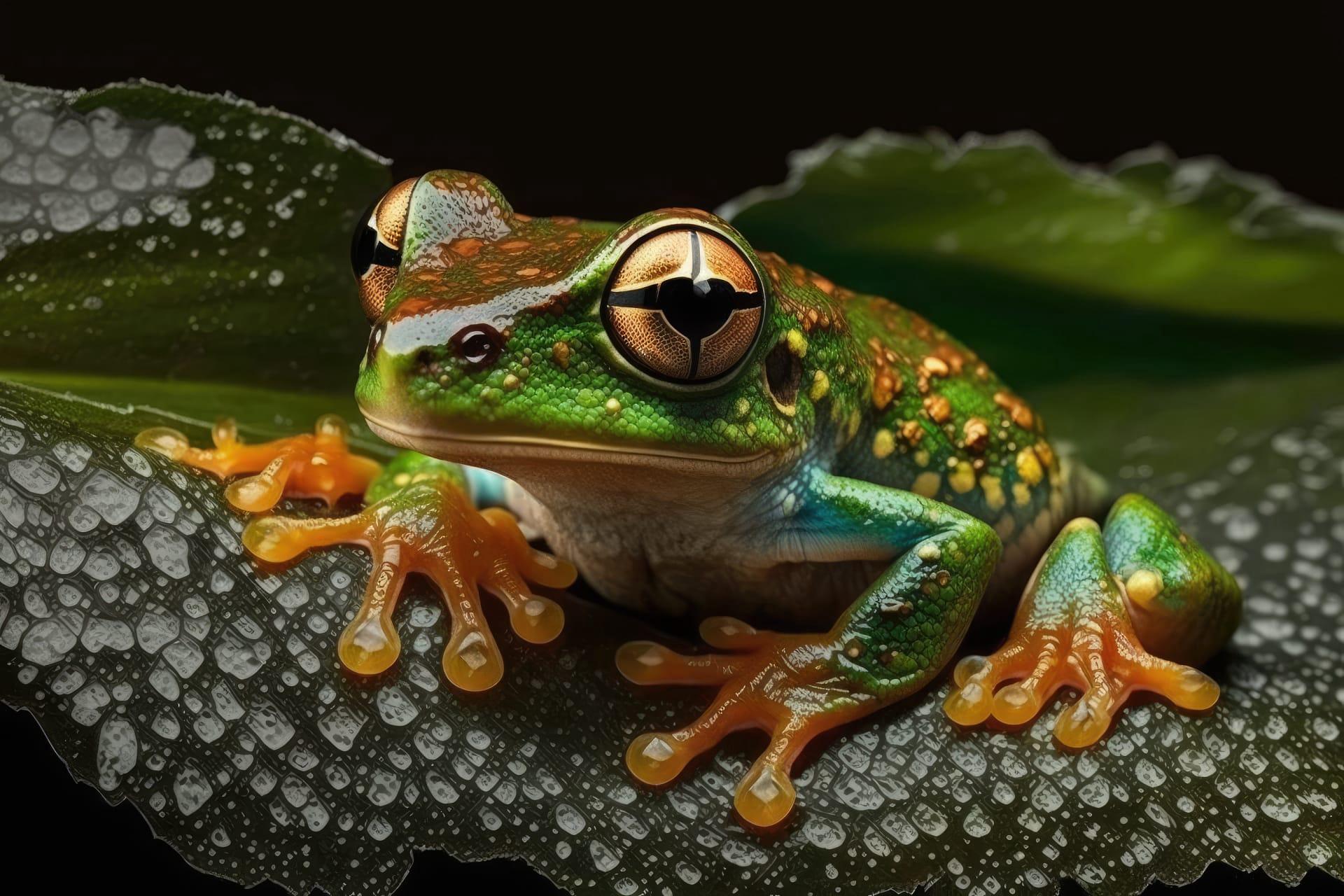Tree Frog Characteristics
- Home /
- Mini Encyclopedia /
- Animal /
- Tree Frog Characteristics
1
Tree frogs are a fascinating and diverse group of amphibians known for their unique adaptations to arboreal life. Physiologically, these frogs vary greatly in size, ranging from a mere 0.8 inches (2 cm) to over 4.7 inches (12 cm) in length, depending on the species. They are characterized by slender bodies and long legs, perfect for leaping between branches. Their lifespan also varies, with some species living up to 15 years in the wild. Their skin can exhibit a range of colors, often vibrant greens, browns, and yellows, and can sometimes change color in response to temperature and humidity changes.
One of the most remarkable organs of tree frogs is their feet. Adapted for a life in the trees, their toes have large, round, sticky pads that help them cling to leaves and branches. These pads work due to a combination of a sticky secretion and thousands of tiny microstructures on their surface, which increase surface area and allow for Van der Waals forces to occur. This adhesion enables them to move and rest on vertical surfaces, an essential ability in their arboreal habitat.

2
Question: Why do tree frogs often appear in different colors?
Answer: The coloration of tree frogs is a fascinating aspect of their physiology. It's primarily a result of their need to blend into their environment to avoid predators, a survival strategy known as camouflage. Tree frogs can appear in various shades like green, brown, or yellow, depending on their surroundings. The color change is facilitated by special cells in their skin called chromatophores, which expand or contract to alter the frog's coloration. This ability not only helps them avoid predators but also aids in thermoregulation by darkening or lightening their skin to absorb or reflect heat.

3
Tree frogs exhibit remarkable mobility, particularly in their natural arboreal habitats. They are skilled climbers, using their unique toe pads to grip surfaces securely. These amphibians are also known for their impressive leaping abilities. Some species can jump distances over 50 times their body length, thanks to their powerful hind legs. This agility is crucial for escaping predators, moving between trees, and catching prey.
In terms of feeding, tree frogs are primarily insectivorous, preying on a variety of insects and other small invertebrates. Their hunting strategy involves waiting patiently, often camouflaged within their environment, and then striking quickly to capture prey with their sticky, projectile tongues. Their diet typically includes flies, moths, spiders, and sometimes even smaller frogs. This predatory behavior plays a significant role in controlling insect populations in their ecosystems.

4
Tree frogs thrive in a range of environments, though they are predominantly found in humid, forested areas where they have ample vegetation to climb and hide. Their habitats span from tropical rainforests to temperate woodlands and swamps. The presence of water bodies is crucial for their survival, especially for breeding purposes, as they lay their eggs in water.
The reproduction of tree frogs involves unique behaviors and adaptations. Most species lay their eggs in water, where they hatch into tadpoles. This larval stage is aquatic, during which they undergo metamorphosis into adult frogs. Some tree frog species have intriguing breeding behaviors, such as laying eggs on leaves overhanging water bodies, so when the eggs hatch, the tadpoles fall into the water. The males of many species are known for their loud, distinctive calls used to attract females during the breeding season.

5
Book: "The Secret Life of Frogs" by Philip Bishop. This insightful book, published in the United States in the 1990s, offers a comprehensive look into the world of frogs, including tree frogs. Bishop, a renowned herpetologist, delves into their behavior, physiology, and ecology, providing readers with a thorough understanding of these fascinating creatures. The book is praised for its accessible language and detailed illustrations, making it a favorite among both scientists and amateur nature enthusiasts.
Book: "Frogs and Toads of the World" by Chris Mattison. Released in the early 2000s in the UK, this book is a global tour of the fascinating diversity of frogs and toads, with a special focus on tree frogs. Mattison, an expert in herpetology, provides detailed descriptions of various species, their habitats, and unique adaptations. The book is richly illustrated with photographs and drawings, offering a visual feast that complements the informative and engaging text.